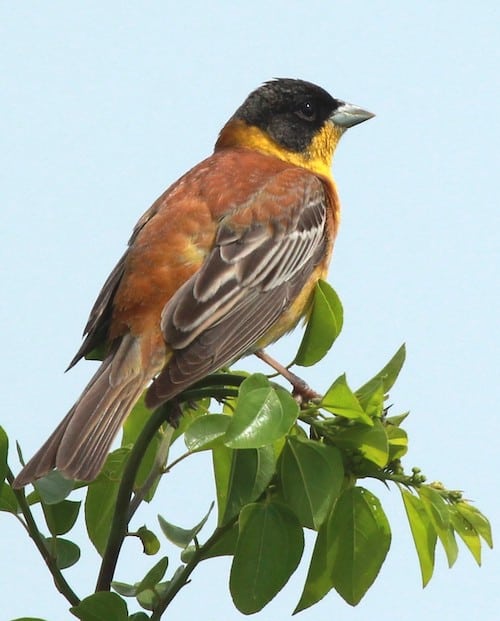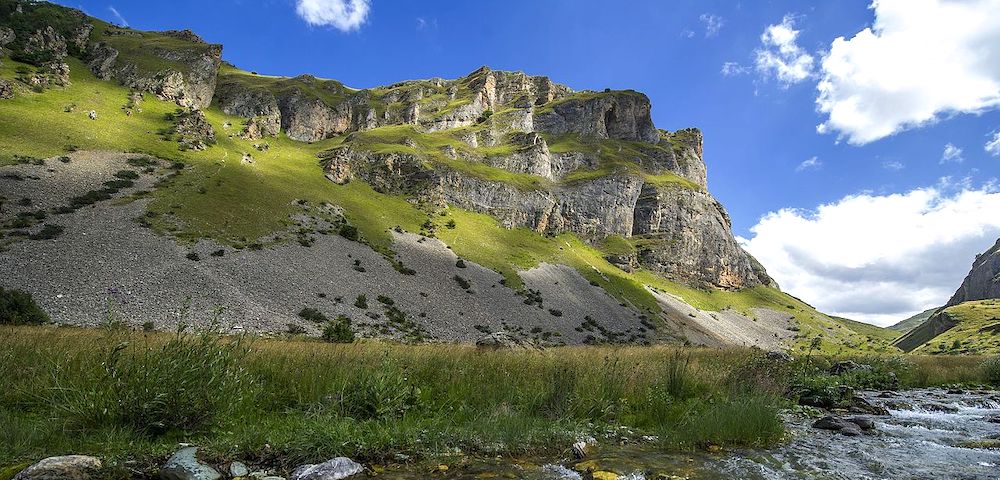Republic of Kosovo

Kosovo is a country in Southeast Europe with partial diplomatic recognition. Kosovo lies landlocked in the centre of the Balkans, bordered by Serbia to the north and east, North Macedonia to the southeast, Albania to the southwest, and Montenegro to the west. Most of central Kosovo sits on the plains of Metohija and the Kosovo field. The Accursed Mountains and Šar Mountains rise in the southwest and southeast, respectively. Kosovo has less than two million inhabitants it’s capital and largest city is Pristina with around a quarter of a million people. It has an area of a little less than 11,000 K² (4,200 square miles).
Geographically, Kosovo possesses varied and opposing landscapes for its size – most of central Kosovo is dominated by the vast plains of Dukagjin and Kosovo. The Albanian Alps and Šar Mountains rise in the southwest and southeast respectively with the highest peak Gjeravica (2,656 m) within the National Park ‘Bjeshket e Nemuna’ and lowest point White Drini River (297 m) the border with Albania. Geographical location, geology, hydrology, the landscape and climate have enabled Kosovo to have a rich biology and diverse landscape.

Lake Liqenat, Bjeshkët e Nemuna National Park – Gashi Bujar, CC BY-SA 4.0 via Wikimedia Commons
Kosovo’s hydrological resources are relatively small; there are few lakes, the largest of which are Lake Batllava, Badovc Lake, Lake Gazivoda, Lake Radoniq. In addition to these, Kosovo also does have karst springs, thermal and mineral water springs. The longest rivers of Kosovo include the White Drin, the South Morava and the Ibar. Sitnica, a tributary of Ibar, is the largest river lying completely within Kosovo’s territory. Nerodime river represents Europe’s only instance of a river bifurcation flowing into the Black Sea and Aegean Sea. Forest covers nearly 40% of the country.
Most of Kosovo experiences predominantly a Continental climate with Mediterranean and Alpine influences, strongly influenced by Kosovo’s proximity to the Adriatic Sea in the west, the Aegean Sea in the south as well as the European continental landmass in the north. The coldest areas are situated in the mountainous region to the west and southeast, where an Alpine climate is prevalent. The warmest areas are mostly in the extreme southern areas close to the border with Albania, where a Mediterranean climate is the norm. Mean monthly temperature ranges between 0 °C in January and 22 °C in July. Mean annual precipitation ranges from 24 to 51 inches per year, and is well distributed year-round.
Birding Kosovo
First steps of nature protection in Kosovo begun in late of 50s by declaring the first protected zone. Today, Kosovo has about 11% of its territory protected by law, under which are included the protected areas of different categories such as 11 nature reserves, two national parks, and more than 100 other protected areas such as nature parks, protected monuments and other natural areas of special importance.
The mountainous west and southeast provide a great habitat for several rare or endangered species including brown bears, lynx, wild cats, wolves, foxes, wild goats, roebuck and deer. A total of 280 species of birds have been recorded, with raptors such as the golden eagle, eastern imperial eagle and lesser kestrel living principally in the mountains of Kosovo.

Šar Mountains, Sharri National Park – Arben Llapashtica, CC BY-SA 4.0 via Wikimedia Commons
Although Kosovo is a small place, distinguished for its rich biological and landscape biodiversity with particular emphasis on fauna, with the presence of species with special internationally importance. Kosovo`s fauna in general and especially avifauna has not been studied sufficiently. So far in Kosovo recognized about 220 bird species and assumed that their number is much larger than 300 species.
-
Bjeshket e Nemuna National Park
InformationSatellite ViewBjeshket e Nemuna National Park in the west of Kosovo, descends almost vertically to the east and northeast along the end of Dukagjini valley and the Ibar River valley. In the West it is part of the mountainous border with Albania and Montenegro. The Park covers an area of 62,488 ha, or 5.7% of the territory of Kosovo. Because of its characteristic geographical location, geological structure and hydrological values this area has a very interesting biological and landscape diversity. It was declared the National park in January 2013 for its geography, geomorphology, flora and fauna. It is an important natural region in Kosovo, but also the entire Balkan Peninsula. In that regard, this area is among the most typical mountain massifs in the Balkans, with more than 1,000 plant species discovered so far. In addition to rich flora, the area is characterised by the richness of its fauna too; 8 fish, 13 amphibians, 10 reptiles, 178 birds, 129 butterflies and 37 mammals. Among its special birds are: Imperial eagle Aquila heliaca, Golden Eagle Aquila chrysaetos and Capercaillie Tetrao urogallus. There are probably more than 200 species of birds because of the high diversity and it being on a migratory route, making Bjeshket e Nemuna have a potential IBA. -
Henci-Radeva Wetland
Satellite ViewHenci/ Radeva wetland lies in the centre of Kosovo, near the International Airport of 'Adem Jashari' and has total area of 110 ha. This wetland was created from the merger of Vrella and Magura watercourses, which are branches of the River Sitnica. The Wetland was created in 1960s, with the aim of cultivating the type of Carp Cyprinus carpio. It is considering the only ecosystem for such species in Kosovo, although artificially formed, it is characterised by its natural value ornithologically, ichtyologically, geologically and botanically, etc. In 2013, the Institute for Nature Protection prepared a professional study to declare the area as Bird Protection Area. It is particularly noted for its faunal diversity, particularly birds. 78 have been reported but there are bound to be more as no survey has been carried out. -
Sharri National Park
InformationSatellite ViewSharri National Park is located in the south-eastern part of Kosovo. Sharri Mountain represents a separate branch of the Dinarides and a gigantic natural border between Macedonia and Kosovo. 70 km of long and 30 km wide, it is one of the largest and highest mountains on the Balkan Peninsula. The Park has an area of 53,469 hectares. With over 1500 species of plants, as many as 20% of which are endemic, Sharri Mountain National Park is a true example of the raw beauty of unspoiled nature. Add to that more than 200 species of birds, lots of other animal species including 147 species of butterflies of exquisite beauty and you will easily understand why Sharri Mountain is considered one of the most important protected ecological areas of biodiversity of the central Balkans. Due to the large areas of intact ecosystems and limited human action the National Park is a stronghold for several threatened species of European importance. Together with other national park in Kosovo Sharri has great potential to be declared an IBA.
-
Number of bird species: 282
(As at April 2025)
-
Avibase
PDF ChecklistThis checklist includes all bird species found in Kosovo , based on the best information available at this time. It is based on a wide variety of sources that I collated over many years. I am pleased to offer these checklists as a service to birdwatchers. If you find any error, please do not hesitate to report them. -
eBird
PDF ChecklistThis checklist is generated with data from eBird (ebird.org), a global database of bird sightings from birders like you. If you enjoy this checklist, please consider contributing your sightings to eBird. It is 100% free to take part, and your observations will help support birders, researchers, and conservationists worldwide.
-
Birds of Europe, North Africa, and the Middle East
| Photographic Guide | By Frédéric Jiguet & Aurélien Audevard | PUP | 2017 | Paperback | 447 pages, 2200 colour photos, colour distribution maps | ISBN: 9780691172439 Buy this book from NHBS.com -
Birds of Kosovo
| By Wolfgang Daunicht | Kindle | 2022 | eBook | Paperback | 218 pages ISBN: B0BLL5MBXB Buy this book from NHBS.com -
Bradt Travel Guide: Kosovo
| By Verena Knaus & Gail Warrander | Bradt Travel Guides | 2017 | Edition 3 | Paperback | 365 pages, 15 pages with colour photos, 2 pages with 1 colour map; b/w maps | ISBN: 9781784770587 Buy this book from NHBS.com -
Collins Bird Guide
| By Lars Svensson | Harper Collins | Edition 3 | 2023 | Paperback | 478 pages, 4000+ colour illustrations, 700 colour distribution maps | ISBN: 9780008547462 Buy this book from NHBS.com

Collins Bird Guide
AndroidThe Collins Bird Guide App provides everything you need to identify a species quickly and learn about it thoroughly.
Collins Bird Guide
Apple iOS |Collins Bird Guide 4+ A field guide to Europe NatureGuides Ltd. Designed for iPadOrganisations-
Kosovo Ornithological Society
-
Wildlife-Kosovo-NGO
InformationPromotes the importance of wildlife and the ecological role of wild animals and habitats in the Republic of Kosovo.
Reserves-
NP Bjeshkët e Nemuna
InformationSatellite ViewThe Bjeshkët e Nemuna National Park is a national park in Gjakova and Peć Districts of Western Kosovo along the borders with Albania and Montenegro. It encompasses 63,028 hectares (630.28 km2) of mountainous terrain, with numerous lakes, dense deciduous and coniferous forests and alpine landscapes.Almost 37 species of mammals, 148 species of birds, 10 species of reptiles, 13 species of amphibia and 129 species of butterflies have been documented to occur within the boundaries of the park. -
NP Sharr Mountains
InformationSatellite ViewThe Sharr Mountains National Park is a national park in southeastern Kosovo. It covers 53,272 hectares (532.72 km2) and is centered on the northern Sharr Mountains, a mountain range that extend in northeastern Albania, southeastern Kosovo and northwestern Macedonia. The flora of the park is represented by 1558 species of vascular plants. The fauna includes 32 species of mammals, 200 species of birds, 13 species of reptiles, 10 species of amphibia, 7 species of fish and 147 species of butterflies. -
NR Maja e Arnenit Strict Nature Reserve
InformationSatellite ViewThe Maja e Arnenit Strict Nature Reserve is a strict nature reserve in the District of Prizren of Southeastern Kosovo. Maja e Arnenit has an area of 30 ha. -
NR Oshlak Strict Nature Reserve
InformationSatellite ViewThe Oshlak Strict Nature Reserve is a strict nature reserve in the District of Prizren and Ferizaj of Southeastern Kosovo.[2] The reserve encompasses 20 hectares (0.20 square kilometres) of mountainous and hilly terrain, small lakes and wide forests with numerous of the related flora and fauna. It is entirely located within the Sharr Mountains National Park. An extraordinary variety of wildlife species live in the region that are of high biodiversity value. Perhaps the most iconic species are the brown bear, red fox, roe deer, golden eagle, wild goat and wild boar.
Other Links-
Kosovo Green Pages
InformationSome links
Photographers & Artists-
Birds in Kosovo
Gallery
Fatbirder - linking birders worldwide...
Skip to content
